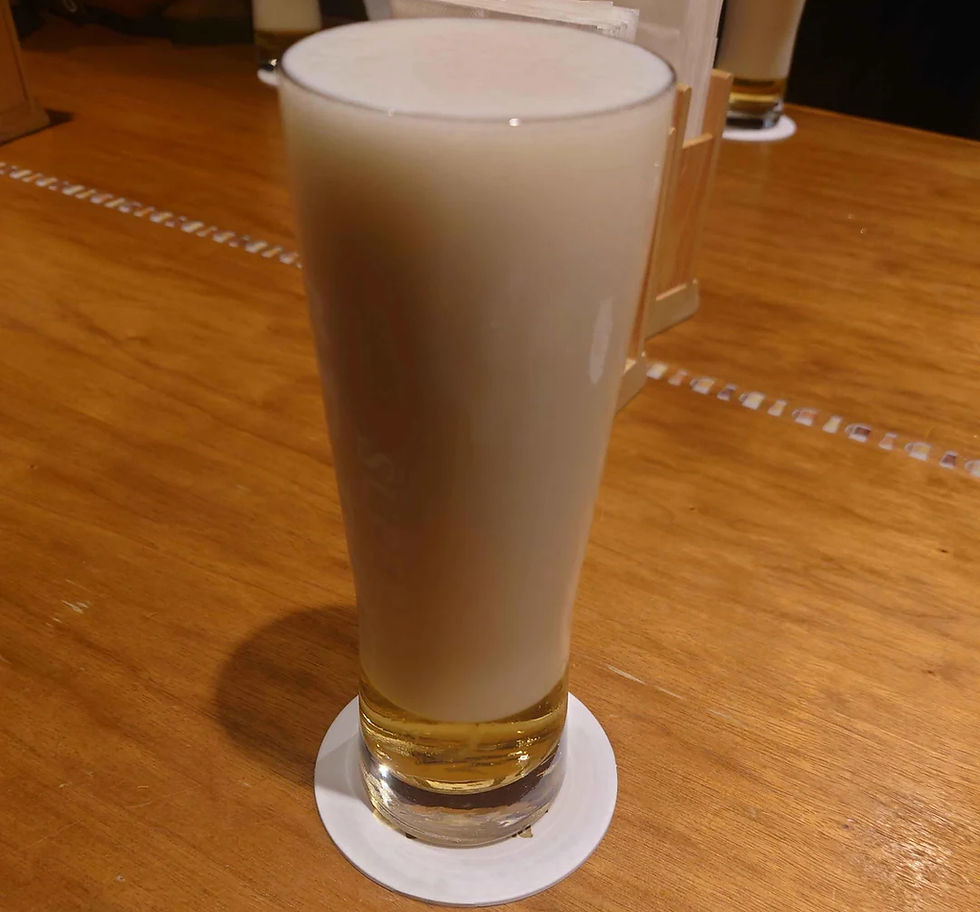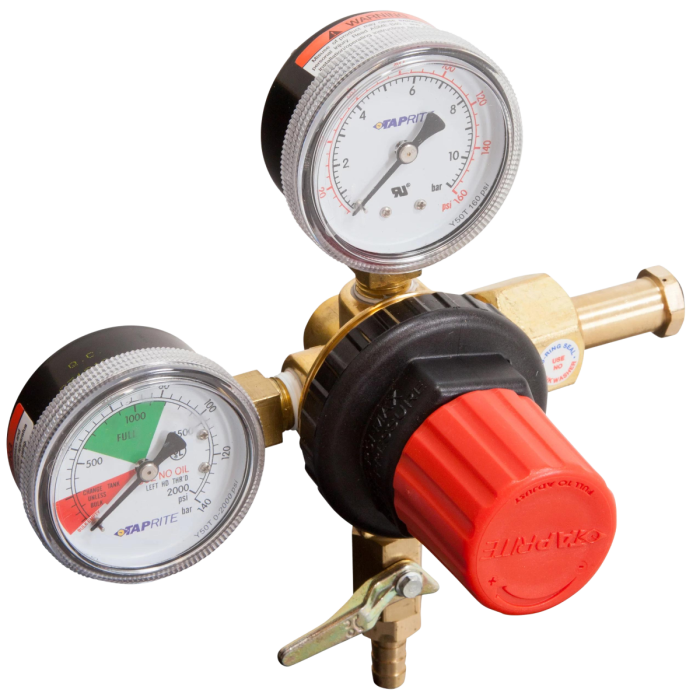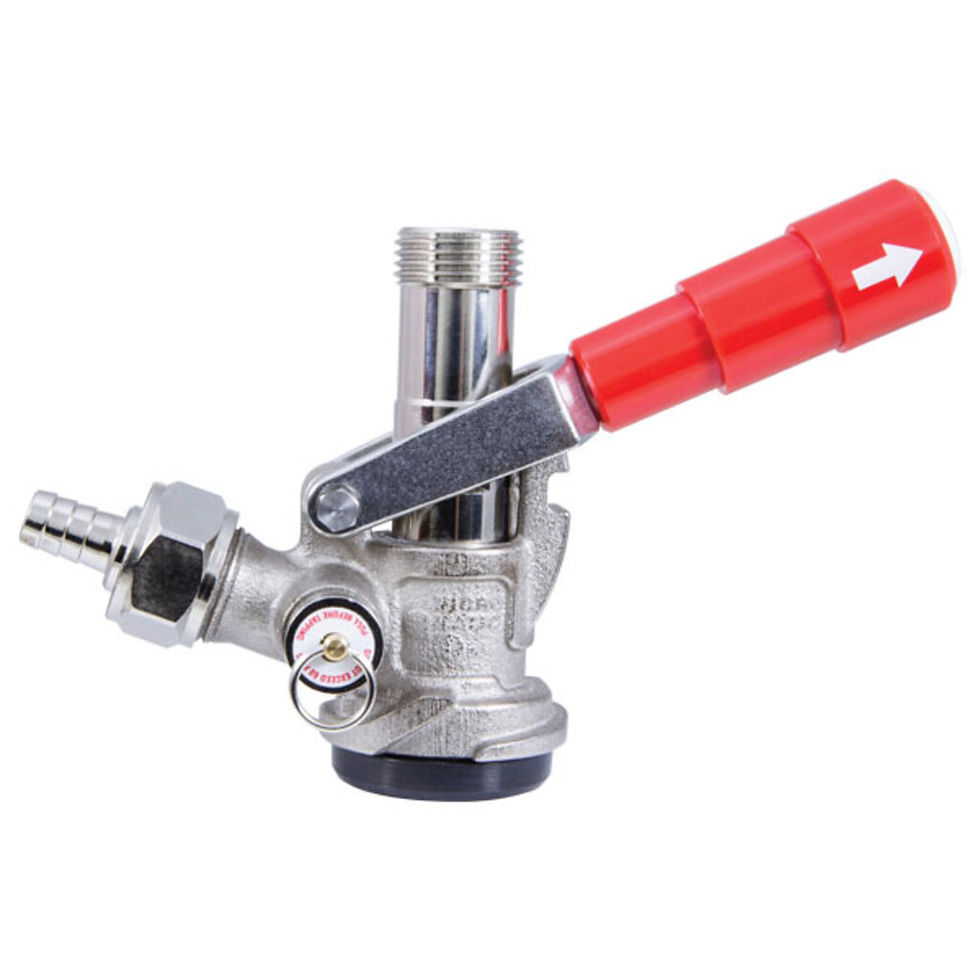DRAFT BEER FOAMING AND WASTE / FOAMY BEER TAPS AND KEG LINES POURING BAD
- Shad Reed
- May 16
- 4 min read
Updated: May 17
The 4 Most Common Causes of Foamy Beer Taps And Keg Lines Pouring Bad

1. Temperature- Draft beer must be stored cold to prevent foamy beer taps. When beer temp gets above 38 degrees gas breaks out causing foam. Get a calibrated thermometer and take beer temp. It is best to pour a pint and let the glass acclimate to temperature. Dump it out and pour another pint to get a proper temp. When beer gets too cold it can absorb co2 and that also will cause foaming. Ideal cooler temp is 34-38 degrees. If you have a long draw system ideal temp for the glycol chiller is 29-31 degrees. We recommend keeping this temp so the glycol can get to the bar and back keeping the beer under 38 is important to keep keg lines from pouring bad. If you don’t have the proper temp, correct before moving forward.

2. Pressure- Weather using 100% co2 or a blended gas you must have the right pressure for the draft system. This is determined by the balance of the draft system at the time of set up. 1. An improper balanced draft system will never perform right, keg lines will pour bad and will waste profits. When balancing a draft system, we use temp, elevation, co2 content of the beer, alcohol content of the beer, distance we are pushing the product and vertical rise or drop the product will take to the dispense tower. Using gas blending technologies, we can balance a system to hold perfect carbonation levels of the beer through the life of the beer. It is imperative to have a proper balanced draft system and keep the pressure at that point. You can use 100% co2 as long as you have a short distance between the kegs and tower. Long draw systems need a nitrogen blend to push the beer. We can only put so much co2 in the beer before it starts to over carbonate. When pushing beer a long distance we blend in nitrogen so we can turn up the pressure to maintain flow rate and not over carbonate. Often a beer system will get warm and the first thing the staff or management do is turn down the pressure. That is the worst thing you can do as the beer is losing carbonation thus causing foamy beer due to temp and turning the gas down makes it worse. Know the pressure your system is balanced at and don’t ever let anyone change it for any reason.


3. Compromised seal or pinched line - No need to look at this until you know you have proper temp and pressure. Once temp and pressure are determined correct then we can look at the seals. Generally, this will be one line having an issue. The keg coupler has a bottom seal and sometimes a probe seal. If either one is compromised that can cause foamy draft beer issues. Chances are there will be bubbles coming out of the top of the keg and can be seen in the line. The keg also has a seal that can be nicked or damages. Even the smallest nick can let air in and cause a keg line to pour bad. Dry the keg seal and inspect for damage. Try another keg on that line. Sometimes re-tapping the keg will get it to seal up. Pinched lines are not common in long draw (glycol) systems that have modern screw in shanks. Some older budget towers can have shanks that can move resulting in a pinched line. Usually, you can access the inside these budget towers and inspect for the pinched line. If the tower is foamed in then chances are it has screw in shanks and a pinched line is not the issue. It is very common to have pinched lines in a direct dray or forced air system. These towers have a cap on them that pops off so that you can inspect for a pinched line.

4. Dirty draft lines- An improper maintained draft system can cause foaming draft beer. It has to be severely neglected to get to this point. The faucets have breather holes that will get clogged if not cleaned regularly and that will cause the system to foam. It is important to have the lines and faucets cleaned every two weeks to maintain flavor and aromas. The bacteria in beer takes off at the two-week period so that why it is recommended to have the system maintained every 14 days. Generally, it will take several missed cleanings to cause enough build up to clog a faucet breather hole. If upon a visual inspection of the faucet, it has a black substance on it than it needs to be disassembled and cleaned.



Comments